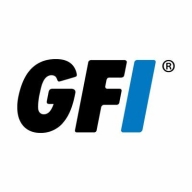

Kaseya VSA and GFI LanGuard compete in IT management and network security. Kaseya VSA scores higher in deployment and support, while GFI LanGuard dominates in features and ROI.
Features: Kaseya VSA offers comprehensive automation, remote control capabilities, and effective patch management and backup options. GFI LanGuard stands out with its superior vulnerability assessment, network monitoring, and comprehensive network security tools.
Room for Improvement: Kaseya VSA needs better reporting functionalities, reduced system slowdowns, and more performance refinement. GFI LanGuard could improve by simplifying its setup process, enhancing its user dashboard, and making its features more accessible.
Ease of Deployment and Customer Service: Kaseya VSA's deployment is generally straightforward, although some users may find it complex initially; its customer service is highly rated. GFI LanGuard, while having a more cumbersome deployment process, provides detailed support documentation and requires more initial effort.
Pricing and ROI: Kaseya VSA offers flexible pricing with good ROI, especially for larger organizations. GFI LanGuard, despite a higher upfront cost, delivers strong ROI through powerful network security features.
The customer service provides a fast response.
I would rate their support five out of ten because most of the time they are not able to resolve the issues.
It's always expensive for the customer.
Regarding the patching and software management, for me, it's the best path.
| Product | Market Share (%) |
|---|---|
| Kaseya VSA | 6.9% |
| GFI LanGuard | 2.2% |
| Other | 90.9% |


| Company Size | Count |
|---|---|
| Small Business | 10 |
| Midsize Enterprise | 2 |
| Large Enterprise | 1 |
| Company Size | Count |
|---|---|
| Small Business | 25 |
| Midsize Enterprise | 4 |
| Large Enterprise | 4 |
GFI LanGuard enables complete patch management of security and non-security patches to Microsoft operating systems, Mac OS X, major Linux distributions and third-party applications. It can also automate patching for all major web browsers too.
Kaseya VSA (Virtual System Administrator) is a cloud-based IT management software that provides a comprehensive set of IT management tools for small and mid-sized businesses, including remote monitoring and management, help desk ticketing, patch management, and automated IT processes.
VSA provides a centralized platform for IT administrators to manage and monitor multiple devices and endpoints, including desktops, laptops, servers, and mobile devices. The software offers real-time monitoring, automated alerts, and reporting capabilities to help administrators quickly identify and resolve issues.
VSA also includes a help desk ticketing system for managing and resolving IT support requests, as well as a patch management module for keeping systems up-to-date and secure. Additionally, the platform offers a range of automated IT processes, including software deployment and inventory management, to help administrators streamline their work and improve efficiency.
Kaseya VSA Features
Kaseya VSA has many valuable key features. Some of the most useful ones include:
Kaseya VSA Benefits
There are many benefits to implementing Kaseya VSA. Some of the biggest advantages the solution offers include:
Reviews from Real Users
Kaseya VSA is a solution that stands out when compared to many of its competitors. Some of its major advantages are that it’s easy to use, has a good Live Connect feature, and its unified portal.
A Team Lead at a tech services company explains what he finds most valuable about the solution: “The ease of access and ease of use was great. When Kaseya is deployed on the customer's computer, we have access to the customer. We just need the computer's name or ID, or sometimes, if the user has the same name as their first name, we can find them that way.”
"The most valuable piece of the puzzle for me is what they call Live Connect. It is the piece that allows you to support an end-user without having to take the keyboard and mouse,” says another Automation Team Lead at a tech services company.
PeerSpot reviewer Allan E., Director Of IT / Purchasing Manager at Macomb/St. Clair Workforce Development Board expresses, “One of the most appealing features is that it combines remote control, patch management, and software management into a single portal."
We monitor all Patch Management reviews to prevent fraudulent reviews and keep review quality high. We do not post reviews by company employees or direct competitors. We validate each review for authenticity via cross-reference with LinkedIn, and personal follow-up with the reviewer when necessary.